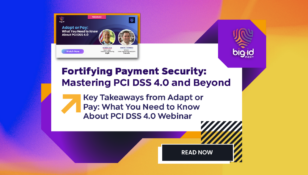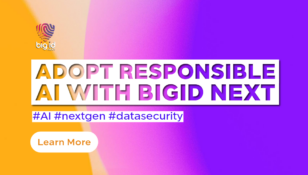The Difference Between SSPM vs DSPM vs CSPM in Data Security
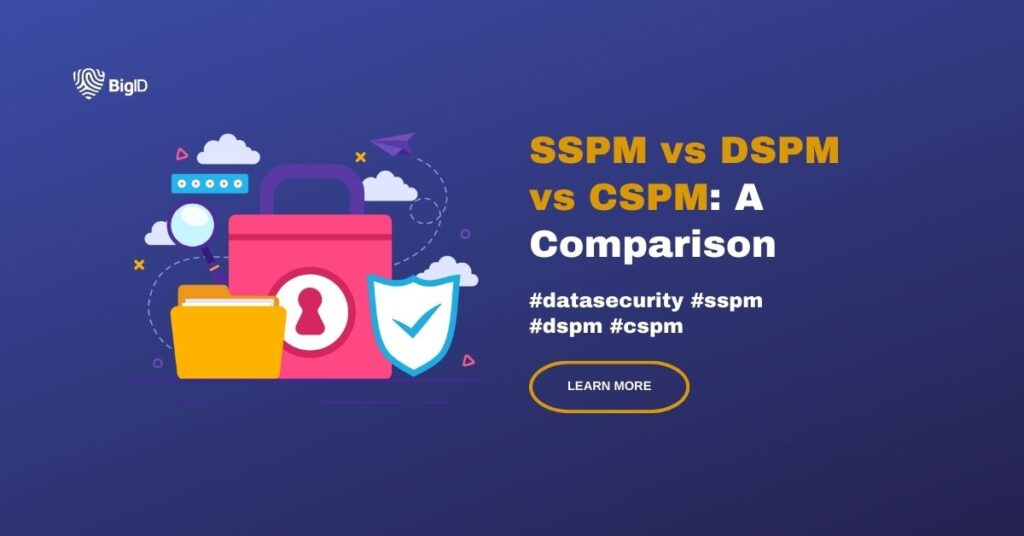
SSPM, DSPM, CSPM: What Are They, and Why Do You Need Them?
Your organization’s security posture says a lot about your business and how well-prepared you are against security threats. If it is strong, you’re in a good position to predict, prevent, and reduce potential threats.
SaaS security posture management (SSPM), cloud security posture management (CSPM), and data security posture management (DSPM) are frameworks that help improve your security posture.
But, what are they? Why do you need them? Are they complementary, or do you need only one?
Let’s compare SSPM vs DSPM vs CSPM and get these answers.
Protect Your Data, No Matter Where It Is
In the past, all your business data, technologies, and assets were located on your premises. Now, business data is more likely to be in the cloud.
What’s more, businesses will often have their technologies and applications in the cloud as well. Slack, Zoom, Trello, Asana, Mailchimp, and Google Workspace are all cloud-based software services. However, they are owned and operated by someone else, so how do you secure your operations on these platforms and environments?
This is where SSPM and CSPM come into play.
What is SSPM (SaaS Security Posture Management)?
SSPM is a security framework for businesses that use software-as-a-service, or SaaS, in their operations. It automates continuous risk assessment and compliance monitoring for those environments.
When you use a SaaS application for your business, the risks are slightly different from those faced by on-premise systems.
SSPM tools detect, remediate, and mitigate risks to SaaS apps and the business data they contain. These tools will check for improper configurations and excessive access permissions granted to users. They will also identify old, unused (stale) APIs and accounts that could be a potential security risk.
Your SSPM tool will follow SaaS security best practices for automated workflows and controls to plug any major security gaps. As a result, your security team can focus on issues that require human intervention.
Key Capabilities of SSPM Tools
An SSPM tool secures your business’ SaaS apps with the following capabilities:
Application Discovery
An effective SSPM tool can integrate into an ecosystem with multiple SaaS applications. Once connected, it will find all the applications you use so they can be monitored and managed.
Continuous Monitoring
This function is like a 24/7 security team watching your SaaS environments for threats and security issues. Since it is always monitoring, it can catch and mitigate these vulnerabilities early to prevent them from becoming bigger problems later.
Configuration Management
If your SaaS solutions are not configured properly, they can cause security problems. An SSPM solution uses best practices and your cybersecurity policies to identify and alert you of misconfigurations.
Threat Detection and Response
No defense can be completely airtight. Even the most stringent mitigation strategy might not prevent security incidents. In such a case, your SSPM tool is equipped to detect the incident, inform you, and also suggest the best response to deal with it. Again, a quick response keeps the incident from escalating.
Compliance Management
Your business information also includes customer data, which is protected by certain laws, like GDPR, CCPA, HIPAA and others. These data protection regulations require your business to comply with security guidelines. An SSPM solution will make sure that your SaaS application adheres to these guidelines so you don’t violate any laws.
Access Control and Permission Settings
Not all employees within the organization are allowed to see certain information, so you control access by implementing a zero-trust framework. Under this framework, you use methods like multifactor authentication (MFA), least privilege access, and role-based access control (RBAC) to manage who can view what data. Your SSPM tool can be used to enforce these.
Data Protection
To keep your business data safe within the SaaS environment, you must have safeguards in place. Your SSPM tool can help you do this with data encryption, secure sharing practices, and data loss prevention (DLP) methods.
Security Policy Enforcement
Different SaaS solutions might have their own security policy, which may or may not be as stringent as you’d want. An SSPM tool can help you enforce a consistent security posture based on your policies and configurations across all your apps.
Security Tool Integration
The biggest strength of SSPM is that it doesn’t try to function all on its own. If you have other security solutions, like firewalls or identity and access management (IAM) tools, you can integrate them with the SSPM solution to get a clearer picture of your SaaS ecosystem and its security.
Now that we know what SSPM is and what it’s capable of, let’s take a look at CSPM and DSPM to find out whether you need them to protect your business or not.
What is CSPM (Cloud Security Posture Management)?
Not all your cloud data is on SaaS applications. Some of it in your cloud accounts. CSPM is a framework that manages the security of these cloud accounts, data, and applications.
CSPM solutions automate security with continuous monitoring to discover misconfigurations and network vulnerabilities in your cloud environment. They perform almost the same function as SSPM tools, but specifically for cloud ecosystems.
Key Capabilities of CSPM
CSPM tool capabilities are quite similar to SSPM tools. They offer:
- Asset discovery
- Compliance management
- Configuration settings management
- Access control management
- Threat detection and mitigation
- Continuous monitoring
- Multi-cloud security enforcement
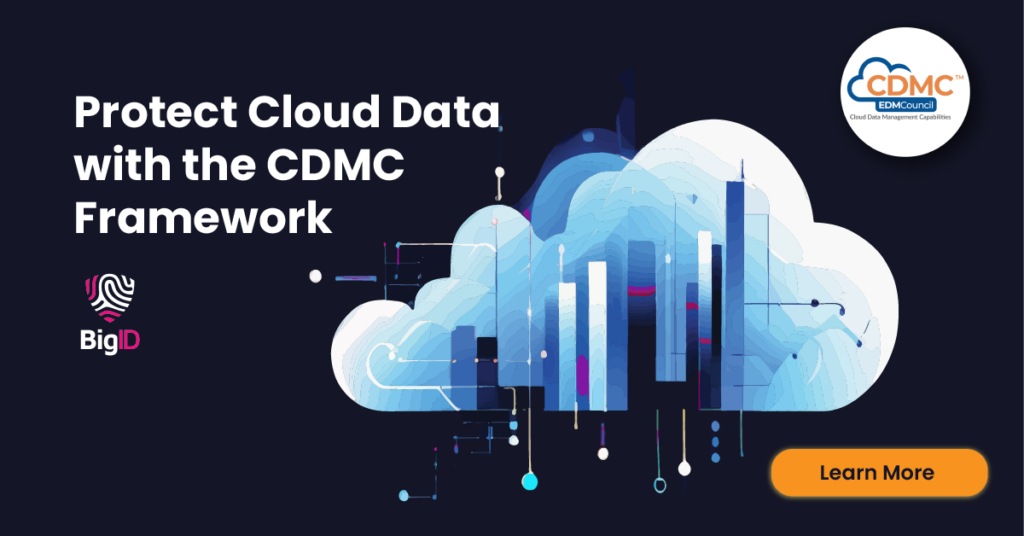
SSPM vs CSPM
As you can see, both SSPM and CSPM serve similar functions; that of unifying and automating security. However, the former focuses on SaaS applications that your business doesn’t own or control, while the latter focuses on your own cloud accounts.
How Does Data Security Posture Management Fit in This Picture?
Where SSPM and CSPM protect SaaS and cloud environments from security threats and breaches, DSPM does the same for all data. Yes, we mean ALL data, regardless of whether it resides on-premise, in the cloud, or within SaaS applications.
A DSPM tool provides clarity on:
- What sensitive data you have, and where it’s stored
- The users who have access to it, and their permission levels
- Where your data comes from, how it has been processed and altered, and how it’s being used
- Any misconfigurations in your systems that could possibly affect your data security, and how to identify and fix them
Key Capabilities of DSPM
While you can learn about the main components in our “What is DSPM?” post, here’s a list of what it can offer:
- Data discovery and classification
- Security assessments
- Risk remediation and response
- Compliance and reporting
- Integration and scalability
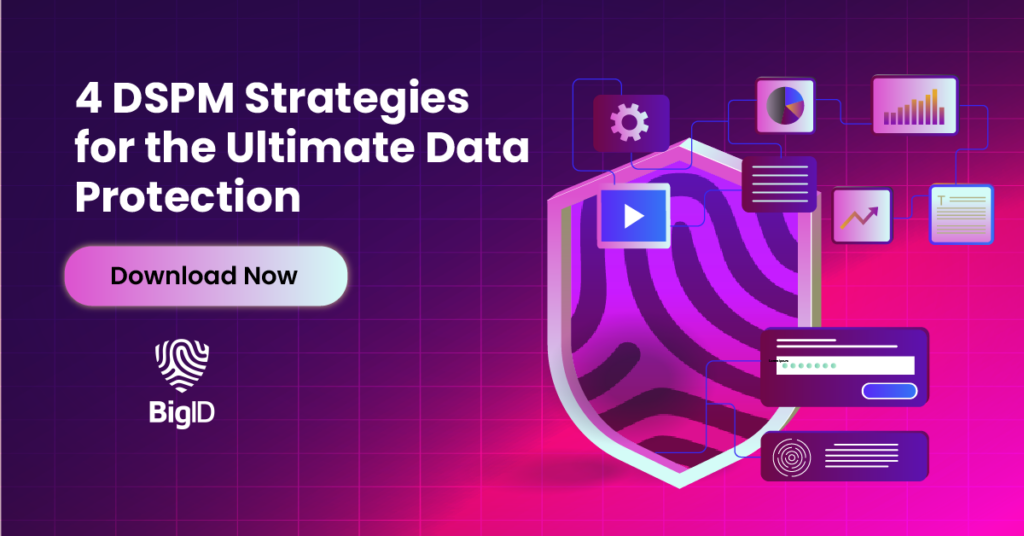
DSPM vs CSPM vs SSPM
Again, the difference between DSPM, CSPM, and SSPM is the area of focus. As mentioned earlier, DSPM solutions secure all business data regardless of its location. The other two, on the other hand, are more targeted in what they protect.
A good way to differentiate between them is:
- DSPM protects data, especially sensitive data, across your organization
- CSPM secures the cloud infrastructure from security threats and configuration errors
- And, SSPM protects your SaaS applications from misconfigurations and risky permissions
Using DSPM With CSPM and SSPM
So, the question is, should you use one, two, or all of these solutions? The answer to that is probably another question: Do you use only SaaS applications, or cloud accounts, or on-premise applications, or do you use a mix?
On the face of it, DSPM, which specializes in data security, should be a great generic solution. However, CSPM and SSPM are able to give you more targeted protection against the threats faced by these two ecosystems.
Conversely, if you mostly work in the cloud, or use several SaaS applications, you might consider only investing in CSPM or SSPM. However, the downside is that these applications will prioritize any vulnerabilities in their target environment, regardless of its severity.
To get a truly balanced picture of your overall business operation security, it’s often best to invest in all three, if you use SaaS and cloud solutions. Most DSPM, CSPM, and SSPM tools will easily integrate with each other, giving you a well-rounded and robust security posture.
Boost Your Data Security with BigID
BigID is a comprehensive data governance and security tool that makes data mapping and classification really simple. Its detailed capabilities include user access management and risk management, as well as detailed reporting.
It helps give you a unified view across your entire ecosystem, including cloud, hybrid cloud and on-premise.
While it’s considered excellent for DSPM, the platform also monitors cloud and hybrid cloud environments.
Get a 1:1 demo with our security experts to learn more about how BigID can protect your cloud data.




